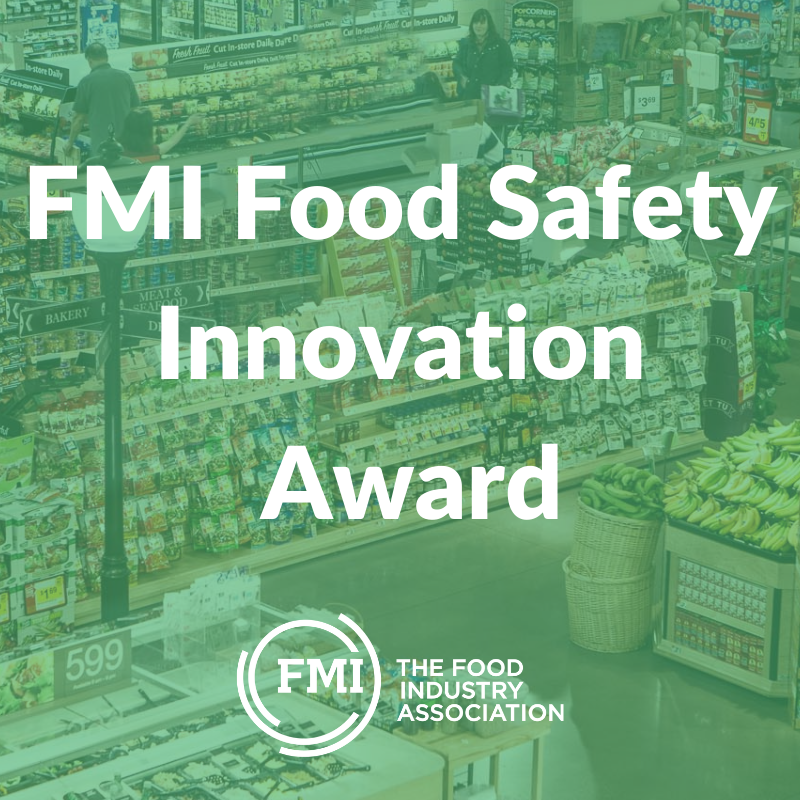By Ashley Eisenbeiser, MS, CFS, Senior Director, Food and Product Safety Programs, FMI

Shoppers are looking for a greater variety of produce and they are looking for produce with specific production attributes. Older generations (Boomers and Gen X) report a greater interest in produce that is locally sourced and grown in the USA whereas younger generations (Millennials and Gen Z) report having a greater interest in organic, sustainably grown, and hydroponic or greenhouse grown produce, according to The Power of Produce 2022.
Controlled environment agriculture (CEA) operations, such as hydroponics and indoor farming, can help with meeting the needs of shoppers by providing a variety of fresh produce that is sourced locally. Leafy greens, microgreens and herbs are examples of produce that is grown indoors. While CEA is not new, the adoption for commercial food production has grown significantly in recent years as companies have increased investment in more sustainable food production.
Production of produce in a controlled environment help growers eliminate variability and avoid some factors that could have a detrimental impact on crop production (e.g., rain, drought, pests, etc.). CEA allows for year-long availability of local produce in regions that may not be ideal for growing produce (e.g., climate, geography, resources, etc.).
CEA food production can help address some of the challenges associated with growing produce, but it is not without its own challenges. One misconception is that produce grown indoors is safer than traditionally grown produce. While indoor farming may reduce or eliminate some potential sources of contamination, (e.g., wildlife, domestic animals, and birds flying overhead), food safety risk factors associated with CEA operations remain. In some cases, the food safety risks with indoor operations are similar to traditional operations and in other ways, they differ and are similar to the risks in a manufacturing environment. Regardless, all food safety risk factors must to be evaluated and all identified hazards must be controlled.
Eight-five percent of Americans report having confidence in the safety of fresh fruits and vegetables they purchase in the grocery store (The Power of Produce 2022). The food industry is committed to maintaining a high-level of trust by safeguarding the fresh produce supply and assuring all produce is as safe as possible.
Considerations for Sourcing Safe Produce
- Have a supplier approval program in place. Specifications for approving a supplier should be established prior to purchasing from a supplier and should always address food safety expectations.
- On an ongoing basis, monitor and evaluate food safety performance of approved suppliers and take appropriate actions.
- Purchase products from reputable vendors that have implemented strong food safety management programs and meet all food safety regulatory requirements—such as the Produce Safety and Foreign Supplier Verification rules established by the FDA Food Safety Modernization Act — and are certified and have annual audits from a GFSI program, such as SQF.
Tools and Resources to Help Evaluate Suppliers
- FDA Investigation Report: Factors Potentially Contributing to the Contamination of Packaged Leafy Greens Implicated in the Outbreak of Salmonella Typhimurium During the Summer of 2021
- SQF Food Safety Code: Primary Plant Production – The SQF Primary Plant Production Code addresses indoor farming of plant products.
- FDA Firm/Supplier Evaluation Resources for FSMA Rules - The FDA firm and supplier resources available include data associated with inspections classification, inspections citations, import alerts, warning letters, recall information, compliance and enforcement actions, etc.
- Recommended Food Safety Practices for Leafy Greens - This guide includes recommendations on food safety best practices for food retailers and wholesalers to consider when sourcing leafy greens.
- Best Practices in Supply Chain Agreements to Prepare for Recalls, Market Withdrawals and Consumer Advisories
- American Frozen Food Institute’s Food Safety Zone - Food safety resources designed to support the best food safety practices and include recommendations for food manufacturers aimed at Listeria monocytogenes (Lm) control.
For additional resources to assist with evaluating suppliers, visit www.FMI.org/foodsafety or contact the FMI Food Safety Team at foodsafetyteam@fmi.org.


 Industry Topics address your specific area of expertise with resources, reports, events and more.
Industry Topics address your specific area of expertise with resources, reports, events and more.
 Our Research covers consumer behavior and retail operation benchmarks so you can make informed business decisions.
Our Research covers consumer behavior and retail operation benchmarks so you can make informed business decisions.
 Events and Education including online and in-person help you advance your food retail career.
Events and Education including online and in-person help you advance your food retail career.
 Food Safety training, resources and guidance that help you create a company food safety culture.
Food Safety training, resources and guidance that help you create a company food safety culture.
 Government Affairs work — federal and state — on the latest food industry policy, regulatory and legislative issues.
Government Affairs work — federal and state — on the latest food industry policy, regulatory and legislative issues.
 Get Involved. From industry awards to newsletters and committees, these resources help you take advantage of your membership.
Get Involved. From industry awards to newsletters and committees, these resources help you take advantage of your membership.
 Best practices, guidance documents, infographics, signage and more for the food industry on the COVID-19 pandemic.
Best practices, guidance documents, infographics, signage and more for the food industry on the COVID-19 pandemic.
